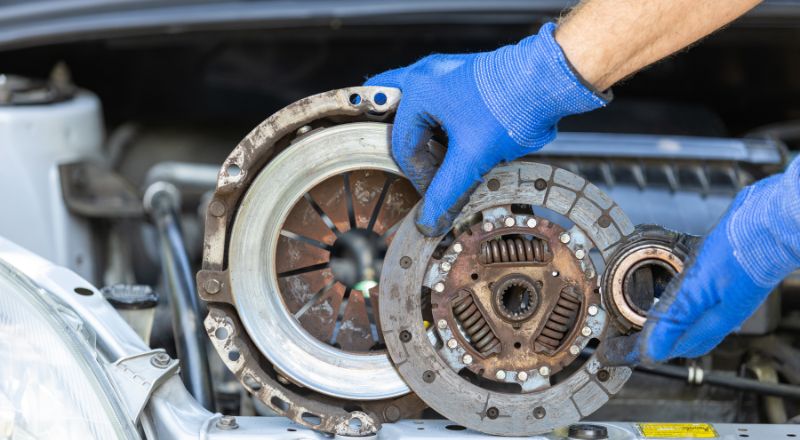4 Signs of Clutch Pressure Plate Failure
Clutch pressure plate failure is a challenging scenario for drivers with manual transmission cars. A worn or damaged pressure plate is expensive to replace, dangerous to drive, and can damage other vehicle components. Keep an eye and ear out for these signs of clutch pressure plate failure to identify and fix the problem before it escalates.
Difficult to Engage Clutch
A surefire symptom of a bad clutch pressure plate is having difficulty engaging the clutch. When a clutch assembly is operating effectively, engaging the clutch should be a smooth and easy process for the driver. But if the driver exerts significant force to engage the clutch pedal, there’s likely a problem.
The issue may be due to failure or damage to the clutch fork, throw-out bearing, or linkage, but in many cases, it stems from the pressure plate. If drivers notice that they’ve gradually had to put more force into their clutch pedal engagements, they should check the pressure plate immediately.
Loose Clutch Pedal Feel
The inverse of a clutch pedal that’s hard to engage is one that feels loose or can even be described as spongy. This is another common problem for cars that have issues with the pressure plate—specifically, with the pressure plate diaphragm spring.
The loose or spongy feeling of the clutch pedal is likely due to a loss of pressure or a leak in the hydraulic clutch system. This could be due to air in the system or low fluid in the reservoir because of a leaking hose or connection. Regardless of the source of the loose pedal feel, drivers should get their cars checked immediately if they feel this loss of pressure in the clutch pedal.
Squeaking Clutch Pedal
The sound of the clutch pedal can also be a sign of clutch pressure plate failure. If the problem is the clutch plate, drivers will likely hear an odd sound when they disengage it, often a squeaking or grinding noise.
There could be other reasons why the clutch pedal is squeaky, but one of the most common sources is a worn down or damaged pressure plate. If drivers hear a slight squeak or grind when they disengage the clutch, they shouldn’t hesitate to inspect the clutch assembly and the pressure plate in particular.
Slipping Gears
Perhaps the most clear-cut sign of clutch pressure plate failure is gear slippage. Gear slippage is when the clutch doesn’t shift smoothly or doesn’t stay fully in gear while driving.
If the clutch pressure plate fails, the gears will slip, and it will feel like the engine is revving and increasing in RPMs too fast for the shift to occur. It can be a startling and frightening occurrence for drivers on the road, so if this does happen, drivers should avoid using their cars until the issue is identified and fixed.
